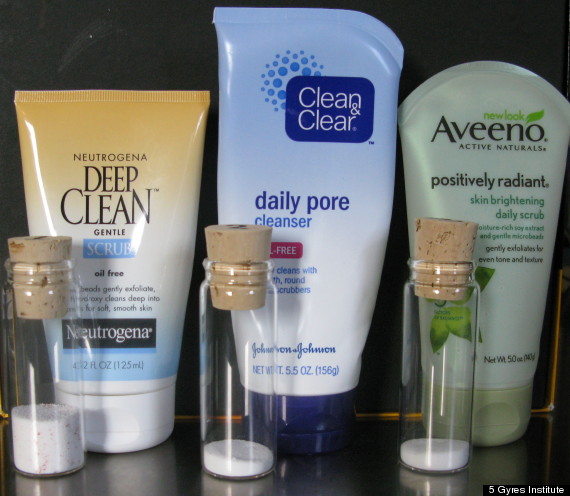 |
| Amount of microbeads found in each of these facial cleansers |
Micro plastics (less than 10mm in diameter) are derived either directly from the virgin pellets used to manufacture plastic goods or indirectly by the photo-degradation of larger plastic products over time.
The problem with micro plastics is that because they are so small and therefore invisible to the naked eye, they not only pass through filtering systems very easily, and therefore can be found in our drinking water but can also contaminate lakes.
Microplastics (microbeads) are now commonly found in facial cleansers as a substitute to natural exfoliates (which are more expensive)
How do microplastics cause damage?
UV degradation of macroplastics makes them prone to absorbing hydrophobic materials such as PCBs which have detrimental effects to the human nervous system. The same degradation can lead to additives which are used to increase the durability of plastics to then leach out.
The very small size of the microplastics means that larger animals don't face problems by ingesting them, as they will pass straight through the digestive system. However, planktonic organisms however can not survive for long after ingestion of microplastics or exposure to the toxins which leach out of the plastics (Cole et al, 2009). Additionally, if the plastics don't cause immediate damage to the organism, but when directed up the food chain (Zitko & Hanlon, 1991) can cause greater impairment.
Small animals will consume very high quantities of microplastics, because they aren't visible and are easily transferable all across the oceans by currents. Therefore, even though a single micro plastic may not cause damage, large quantities will accumulate and agglomerate which can then cause suffocation, starvation or block digestive tracts (Fendall & Sewell, 2009).
Conclusion? Look out for what is in your facial cleansers before buying them.
Hi, really interesting post about microplastics, I didn't know they end up in facial cleaners! I guess when you wash your face, they get washed away down the drain. When it enters water treatment with waste water, do you know how much of the plastics end up in our water? Its pretty scary knowing that we could end up drinking it!
ReplyDelete